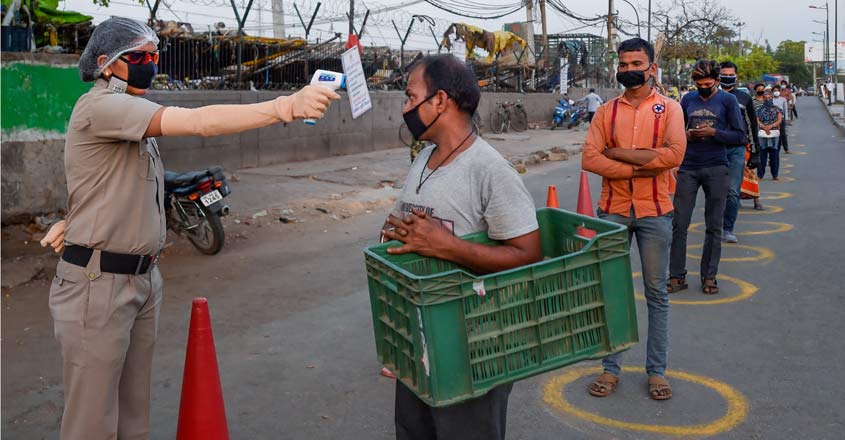
COVID-19 to peak in India by July, say WHO envoy, AIIMS director
Warning the country to expect a sudden surge in the number of positive cases once the ongoing nationwide lockdown is lifted, World Health Organization's special COVID-19 envoy, Dr. David Nabarro said that the pandemic will hit its peak in India in July-end before being contained.

Warning the country to expect a sudden surge in the number of positive cases once the ongoing nationwide lockdown is lifted, World Health Organization’s special COVID-19 envoy, Dr David Nabarro said that the pandemic will hit its peak in India in July-end before being contained.
“When the lockdown lifts, there will be more cases. But people should not be scared. In coming months, there will be an increase in (the number of) cases. But there will be stability in India as it has reported a relatively small number of coronavirus cases because it acted quickly,” Dr. Nabarro told NDTV.
“There will be sporadic outbreaks over time immediately after the lockdown. Thereon, the outbreaks will be contained. I agree with the timing. Around July-end, there will be a flat peak but it will get better,” he added.
Concurring with the WHO envoy, Dr Randeep Guleria, Director of AIIMS told News18, “Currently, the cases are continuing to grow at a flat rate, sometimes even more. So, it is very difficult to predict when the peak will come; but it is likely to peak around June or July. This is why we need to be prepared for it and more vigilant to bring the number of cases down.”
Related news: Death toll due to COVID-19 rises to 1,981; cases climb to 59,662
Reiterating the importance of the nationwide lockdown, the doctor said India, because of its quick action, has managed to limit the pandemic to specific areas located in the urban regions.
“The lockdown has managed to keep the virus reasonably well located in some specific places. Maharashtra, Gujarat, Rajasthan, Delhi and Tamil Nadu. But it is very much located in some of the urban areas because India acted quickly, you have got the situation under control in most settings. It is difficult to control it in a dense set-up. You are certainly slowing down the numbers. Your doubling rate is 11 days,” he said.
To date, the number of cases in India rose to 59,662, registering an increase of 3,320 cases in the last 24 hours.
According to Dr Guleria, the “flat rate” is a big positive for the country, adding that India has done better in keeping its mortality rate low.
According to the Union health ministry, the death toll due to COVID-19 rose to 1,981, after 95 more deaths were reported in the last 24 hours.
Taking into account the growing tally, Dr Nabbaro said, “It is difficult to contain the virus. The number of cases in India is large. But compared to the population of India, it is not a very large number.”
Related news: The Federal’s data-speak: Scale up COVID testing, make it an opportunity
He said that considering the different age structures in India and the higher mortality rate in people above 60 years of age, the total number of deaths in the country is “comparatively less.”
“It does seem that mortality rate is higher in countries with large population of old people. In hot climates, virus doesn’t spread very quickly. In India it is much lower than other countries,” he said.
As per the data revealed by the Union health ministry, the daily growth rate of cases for the last 15 days has been between 4 per cent and 8 per cent with an exception when it touched 9 per cent thrice last week, as compared to the rate rising between 5 per cent and 16 per cent from April 7 to 22.
Clearing the air around US President Donald Trump’s allegation that WHO was favouring China, the envoy asserted that such blames don’t stop the world body from doing its job.
“Whether there is a president who doesn’t like what we do, we will continue doing the work. People are frustrated by the pandemic. But we want to work to push the virus back. We won’t give up even if presidents and PMs are not happy,” he said.


